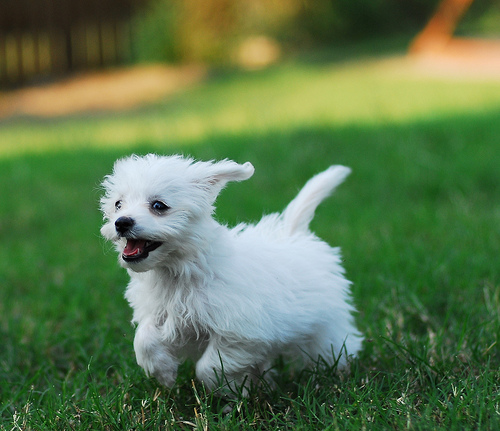
Dog breeders - You are entitled to certain deductions that many others are not qualified for. Get the deductions you deserve and maximize your tax benefits. Photo by Mike Bitzenhofer at Flickr.com
_______________________________________________________________________________
First and foremost, we’re talking about dogs here.
I’m often asked by dog breeders about how to write off the cost of purchasing a dog for breeding purposes. If you are planning on going into the business of breeding dogs, then your dogs are livestock and would fall into the same rules as farm animals.
Depreciation for a dog begins when the dog reaches maturity. If you buy a puppy for breeding, depreciation begins when the dog can be bred. If you purchase a dog for working, (such as herding or security) depreciation begins when the dog can actually be worked.
You cannot buy a puppy and write off the entire cost because you say that you intend to breed it. You must actually be breeding the dog to claim an expense.
How long do you depreciate a dog for?
Because dogs are not specifically listed in the IRS depreciation tables, the timeline on depreciating a dog is seven years.
Can I just write off the whole cost the year I start breeding?
Yes, that would be called a Section 179 Expense deduction. But there’s a catch with claiming a Section 179 expense deduction that most people don’t know or forget about. Remember, dogs are depreciated over seven years. If you write off the entire cost of the dog the first year of breeding, but then you quit breeding your dog—you’re required to “recapture” any remaining depreciation.
What does recapture mean?
Well, let’s say your dog cost $2,000 and you claimed the full expense the year you start breeding her. After two years, you decide it’s not worth it and you have her spayed. You only got two years of breeding from the dog, so you have 5 years of depreciation that you have to reclaim.
If you used the MACRS depreciation schedule, you would have claimed $286 the first year and $486 the second year for depreciation. That makes a total of $772. To reclaim the Section 179 expense, that means that you would subtract the depreciation you could have claimed from the $2000 that you wrote off before and you’d have to claim the $1,228 left as income.
Yes, it does stink, but that’s the rule. And remember—a dog breeding business is a more likely candidate for an audit than most other businesses so you’re going to want to maintain your books nice and tight.
A few other points about dogs as business property:
- If you buy dogs to resell, that’s considered inventory and you don’t expense them until you actually sell them.
- If you buy a dog for breeding, and then sell the dog later, you have to reclaim the depreciation as ordinary income. Example: buy dog for $2000, claim section 179 expense of $2000, sell dog for $3000, you would claim $3000 as ordinary income.
- You may purchase a breeding dog and choose not to depreciate the dog, just keep the dog as an investment. When you sell the dog, the profit is taxed at capital gains rate instead of ordinary income (which is a lower tax rate.) Example: dog costs $2000, sold for $3,000, only $1,000 of income is realized and would be taxed at lower capital gain rate.
There’s a lot here to think about. Don’t go trying to claim the cost of your dog on your tax return unless you truly are in a dog business. Expensing a dog is going to be a red flag for an audit—so dot your “I”s and cross your “T”s and make sure you’ve done all your homework.
If you do plan on depreciating your dog, click here to get my handy dog depreciation schedule to help you figure your expenses.
